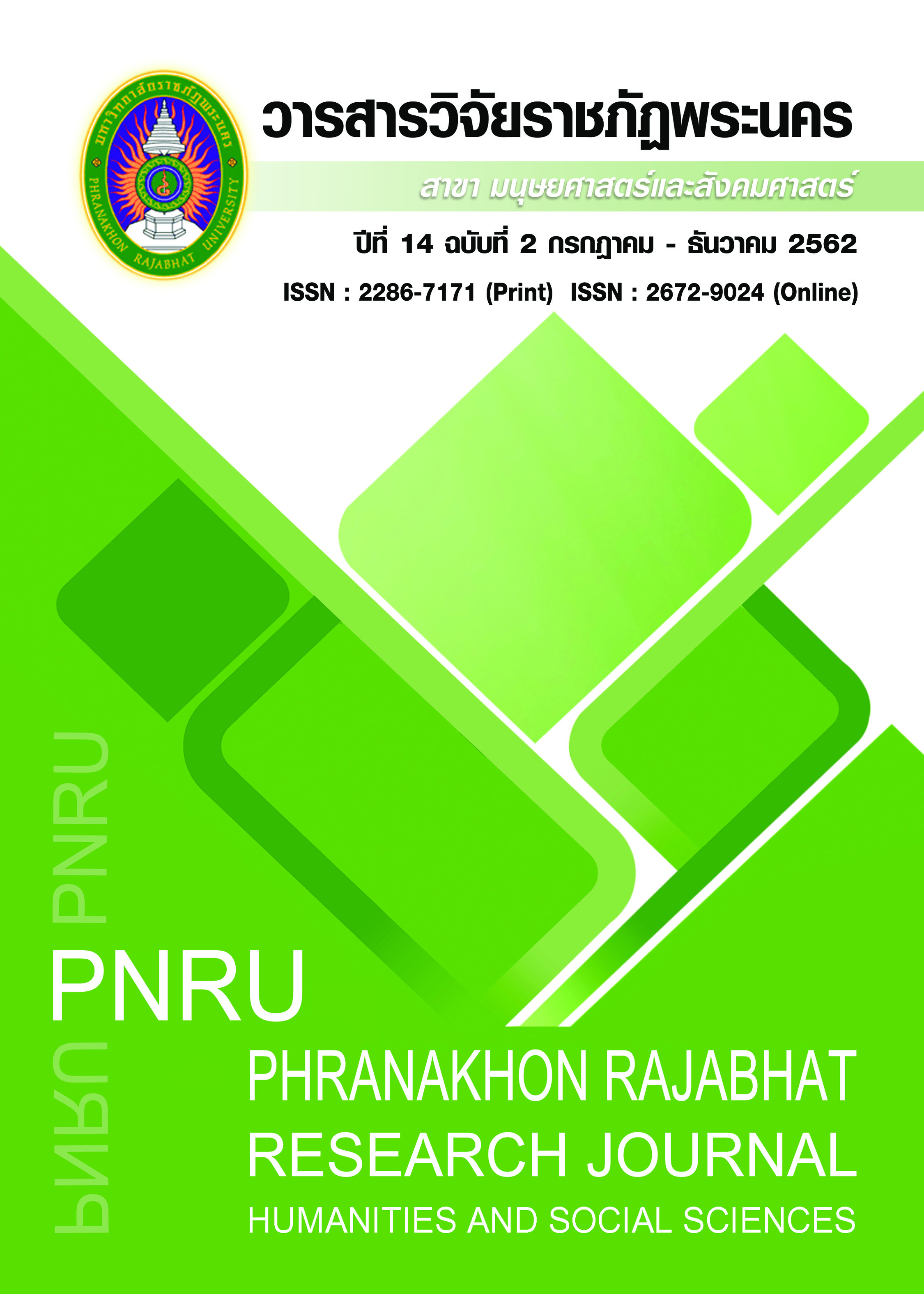THE DEVELOPMENT OF EDUCATIONAL MANAGEMENT FOR FOREIGN STUDENTS OF RAJABHAT UNIVERSITIES IN THE UPPER NORTH REGION IN RATCHABURI PROVINCE
Main Article Content
Abstract
This research aimed to 1) study the educational management of foreign students of Rajabhat universities in the Upper North region, 2) study the factors affecting the decision making of foreign students to study at Rajabhat universities in the Upper North region and 3) study the appropriated educational management model for foreign students who make decision to study at Rajabhat universities in the Upper North region. The populations were 8 administrators of Rajabhat universities in the Upper North region. Theirs consisted of the vice presidents, assistant presidents and deans or directors in the International Affairs division.
The population including the sample group of 333 students from 2,005 foreign students who are studying in Rajabhat universities in the Upper North region in the academic year 2015. The research instruments were questionnaire and the pattern of interview questions. The data were analyzed using frequency, percentage, mean, and standard deviation. The hypothesis had been tested by using the analysis of multiple regressions.
The results of the study were found that 1. The opinions of foreign students in Rajabhat universities at the Upper North region were for the self-development, the more career alternatives and setting the guidelines for the goal of life were respectively ranked. In terms of society, they had the opportunity to meet
new and international friends, had a good social opportunity, and the degree was accepted by the organizations after graduation was respectively ranked. In terms of foreign culture learning, the understanding of the Thai way of life, having experience of living abroad, and meeting new friends in the different cultures were ranked respectively. The stability and life advancement, it was found that they had a chance to gain further study. Studying in this curriculum could fulfill the potential, and the focus of their studies should support them to succeed in their careers were ranked respectively. In terms of the curriculum, it appeared that the credit could be transferred to foreign universities. The curriculum and courses
offered were various and related to the current issues, and also served the needs of the
labor market, respectively. 2. Factors affecting the decision making of foreign students to study at Rajabhat Universities in the Upper North region appeared that the coefficient analysis of the prediction factors was found as follow; the public relations of the university, the curriculum, the study expenses, and the university image, at.664, .361, .213 and .255respectively. 3. The appropriate educational management model for the decision of foreign students to study at Rajabhat universities in the Upper North region founded that;1) Formal education in 2+2type (2years in their country +2years in Thailand) focused on students who
would not be able to communicate in the Thai language clearly. 2) Online education focused on students who studied abroad and could communicate at the Thai language at an average level and 3) Informal education focused on the students who can integrate their work, and those students could be able to communicate in the Thai language at a good level.
Article Details
Each publish articles were copyright by Phranakorn Rajabhat University
Any contents which appeared in each articles in the journal were authors personal opinion. It did not relate to Phranakorn Rajabhat University and other instructors in the university. Each authors would take responsibility on their articles. If there are any mistake, the authors will take responsibility themselves
References
Cubillo, M., J., Sanchez, J. & Cervino, J. (2006). International student’s decision-making process. The International Journal of Education Management. 20(2), 110-113.
MacEachern, J. M. & Yun, D. (2017). Exploring factors influencing international student’s decision to choose a Higher Education institution: a comparison between Chinese and other students. The International Journal of Education Management. 31(3), 343-346.
Mazzarol, T. & Soutar, N., G. (2002). “Push-pull” factors influencing international student destination choice. The International Journal of Education Management. 16(2), 82-90
Office of Higher Education (OHEC). (2015). International student statistic 2017. Copy Print. (in Thai)
Office of Education Council (OEC). (2017). National Education Plan B.E. 2560-2579. Bangkok: Prigwhan Graffic. (in Thai)
Ponce, M. F. M. (2017). International student mobility: trends among emerging markets as strategic tool for International Student Recruitment Offices. INNOVA Research Journal. 2(8), 120.
Promjisa, N. (2013). Cultural dimension in enhancing the happiness of Tai Lue Ethnic group between Thai-Laos border. Regional Strategy Development Program, School of Social Science, Chiang Rai Rajabhat University. (in Thai)
Senarit, P. (2004). Research for learning development: basic education curriculum. Education Research Division, Department of Education, Ministry of Education. Bangkok (in Thai)
Theppornbunchakij, J. (2013). International program management in private higher education, Thailand. Payap University Journal. 23(2). (in Thai)
Wattanasiri, W. (2013). Decision making behavior of students in the Greater Mekong Sub-region in pursing an international higher education in Thailand. Suddhiparitad Journal. 24(73), 146-149. (in Thai)
Ziguras, C. & McBurnie, G. (2011). International student mobility in the Asia-Pacific: from globalization to regional integration? In: Maginson S., Kaur S., Swir E. (EDS) Higher Education in the Asia-Pacific. Higher Education Dynamic, 36. Springer, Dordrecht, 138-139.


